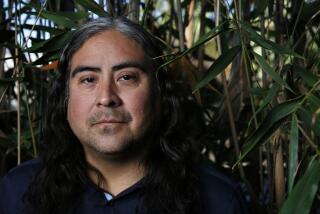MUSIC REVIEW : Husband-and-Wife Organists Play in Cathedral Recital With Dancers
- Share via
Repertory for duo organists being in short supply, Elizabeth and Raymond Chenault have had to commission new works to start their uncommon career.
The result is an abundance of contemporary idioms on their programs. Not surprisingly, that led to some defections during the husband-and-wife team’s recital Friday at the Crystal Cathedral in Garden Grove. Six of the nine works were Chenault commissions.
Most daunting was Arthur Wills’ “Toccata for Two,” a vital work of relentless drive and grinding, close harmonies--from which some respite is given in a section of soft, fluttering arpeggios.
More accessible were Gerre Hancock’s lapidary “A Fancy for Two to Play,” which bathes a hummable tune in muted colors, and John Rutter’s “Variations on an Easter Theme,” which evokes Gospel spirituals in working turns on a 15th-Century French hymn.
Two commissioned works--Douglas Major’s programmatic “Advent Dances” and Conrad Susa’s sprightly “Canticle”--were intended to be accompanied with dancers, if available. But the benefits were dubious Friday.
Seven reasonably well-trained but hard-working dancers from the Cathedral Ministry struggled on carpeted floor or marble steps in Dorie Lee Mattson’s simplistic choreography, overdependent on motifs such as hands clasped in prayer, reaching-up gestures or joy expressed in running splits.
Additionally, sight lines were ruinous. Dancers’ legs were half hidden by rows of seats or the end of the pool that runs down the cathedral’s center.
Although the Chenaults showed mastery of the various idioms, there were problems. The cathedral’s mighty Hazel Wright Organ--with more than 13,000 pipes distributed at the four cardinal points--must, short of a rock concert, be capable of producing the loudest sound in the county.
Either the swell shutters were operating erratically or the team had not yet mastered their correct response time. Either way, too often the playing was marred by sudden dynamic changes that made little musical sense.
Still, Elizabeth Chenault offered Vierne’s “Carillon de Westminster” with virtuosic, non-stop attention. Raymond Chenault handled the roiling rhythms in Dupre’s “Evocation Poeme Symphonique” with secure aplomb.
They closed with Charles Callahan’s nostalgic “Ragtime,” another commission, and a surround-sound version of Sousa’s “Stars and Stripes Forever.”
More to Read
The biggest entertainment stories
Get our big stories about Hollywood, film, television, music, arts, culture and more right in your inbox as soon as they publish.
You may occasionally receive promotional content from the Los Angeles Times.










